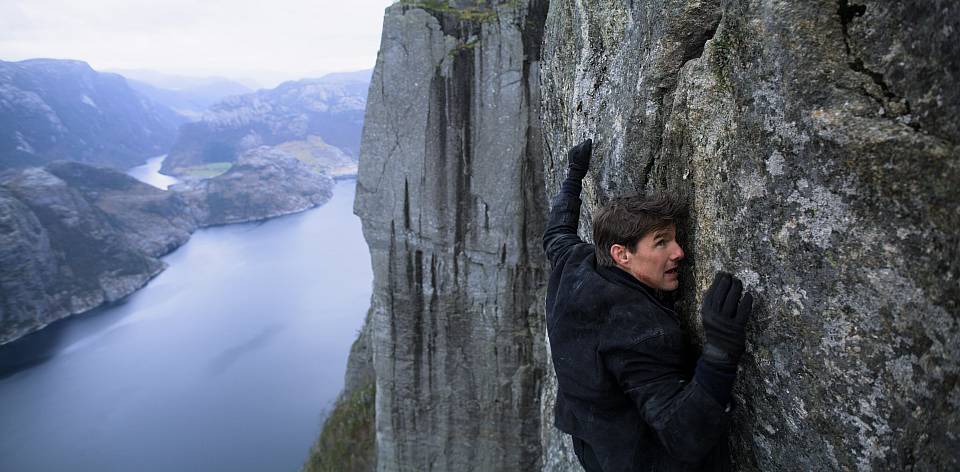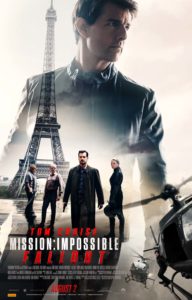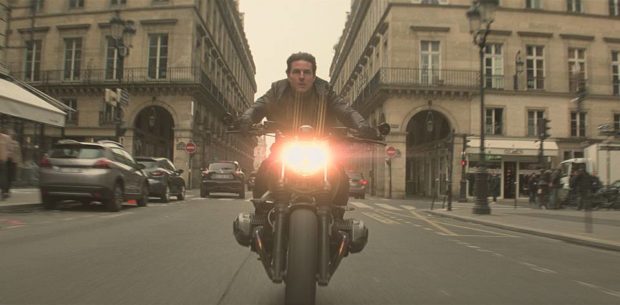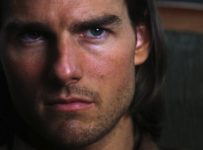Prior to its release, the significance of MISSION: IMPOSSIBLE – FALLOUT changed depending on what fan community you were in. For some it was the film on which Tom Cruise broke his ankle. Other moviegoers can pinpoint it as the reason Superman’s upper lip looked so weird in Justice League. However, for those of us who enjoy ridiculously good action cinema, it’s simply the highlight of the event calendar.
Writer/director Christopher McQuarrie immediately picks up on a number of threads from his Rogue Nation script, opening with the first of many fake-outs: a dream sequence in which Ethan Hunt (Tom Cruise) and Julia’s (Michelle Monaghan) wedding is interrupted by Solomon Kane (Sean Harris) and a nuclear explosion. It’s a prophetic moment, as the IMF are soon on a mission where Hunt loses three plutonium McGuffins while protecting the life of teammate Luther (Ving Rhames). Now saddled with CIA minder August Walker (Henry Cavill), Hunt and Benji (Simon Pegg) try and prevent a massive disaster. Complicating matters is MI6 agent Ilsa Faust (Rebecca Ferguson), working with and sometimes against Hunt’s interests.
Narratively speaking, McQuarrie’s film is a complicated series of double-crosses, compounded by ambiguously aligned agents intensely staring at each other. Yet the franchise principle of escalation means that each Mission: Impossible film has to outdo the last one. On this level, McQuarrie accomplishes his improbable mission, staging a film on a grand scale that makes the infamous laser grid heist scene from the first film (22 years ago!) look like a stroll through the park.
It starts with a lightning-filled skydiving sequence, or more accurately a High Altitude Low Opening (HALO) involving Cruise. One hundred jumps were made from around 25,000 feet to end up with three takes that are used in the film. (Thanks, Wikipedia!) It only intensifies somehow from there: a brutal three-way fight between Cruise, Cavill, and a target demolishes a bathroom. A series of chases through Paris have a French Connection vibe, before Hunt’s car goes against traffic at high speed. It all culminates in one of the best helicopter chases ever put to screen, and a reliable wire-cutting trope to ground it.
Handsomely photographed by Rob Hardy, there’s some beautiful shot of Paris in the golden glow of the sun, book-ended with massive widescreen moments showcasing New Zealand and Norway. The sound design is also to be commended. Between the rousing Lorne Balfe score, one that makes liberal use of the iconic theme, audiences almost feel buffeted by the wind as motorcycles tear through the archways of Paris.
Like the Fast and the Furious and James Bond series, Mission: Impossible has continually managed to reinvent itself while remaining true to its core characters. While the extended running time might seem like a lot of work, there are few time when audiences aren’t fully engaged with what is happening on screen. If the quality continues at this pace, having the series run for another two decades doesn’t seem all that impossible.
[stextbox id=”grey” bgcolor=”F2F2F2″ mleft=”5″ mright=”5″ image=”null”]2018 | US | DIR: Christopher McQuarrie | WRITERS: Christopher McQuarrie | CAST: Tom Cruise, Henry Cavill, Ving Rhames, Simon Pegg, Rebecca Ferguson, Sean Harris, Angela Bassett, Michelle Monaghan, Alec Baldwin | DISTRIBUTOR: Paramount Pictures | RUNNING TIME: 147 minutes | RELEASE DATE: 27 July 2018 (US), 2 August 2018 (US) [/stextbox]






